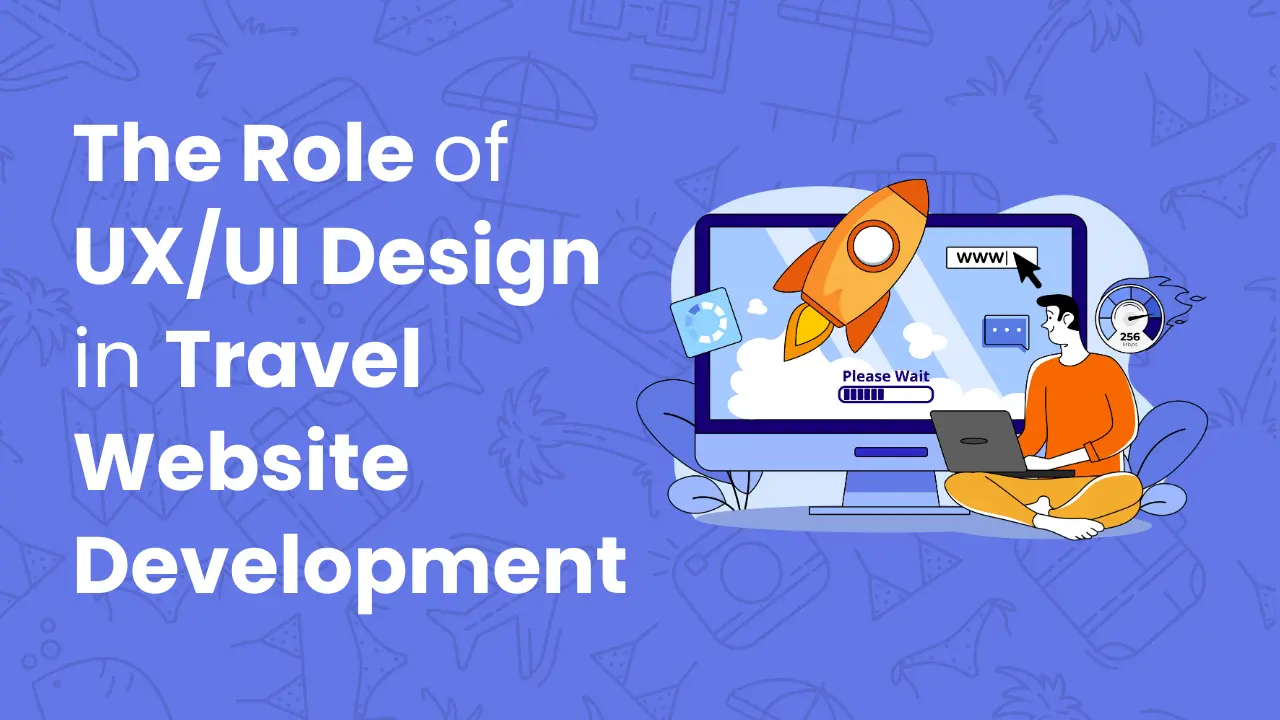Web development helps businesses to boost online presence, enhance brand credibility and user experience, and reach a global audience with advanced technology. A business needs different types of web development services for the complete digital transformation of business.
In this blog we will explain to you the different web development services needed to completely transform businesses digitally. As a business owner, this guide will help you to understand different web development services and choose the right one according to your requirements.
Choosing the right web development company directly impacts your business growth and success with web development solutions. A professional agency builds a website, enhances customer experience, improves search engine visibility, and increases engagement, leading to higher conversions.
Without taking much time now, let’s jump to the main purpose of the article: find the type of web development services.
Types of Web Development Services
Web development companies offer a range of web development services required for businesses to take their business to the digital world.
#1 Front-End Development
Front-end development includes the development of visual and interactive elements of the websites, web apps, and software with customers or users directly interacting to use the product further. It involves the designing and development of a user interface (UI) to ensure a seamless user experience (UX).
Front-end development is the key behind how your website, web app, or app looks and feels to the users. The simpler and more interactive the front, the easier it is to use by the users.
Role of Front-end Development Services
- To create a visually appealing, responsive, and user-friendly design that users interact with.
- Making it easy to use and access the user interface of websites, apps, or web apps across different devices.
- Creating high-quality layouts that load fast for a smooth browser experience.
Key Technologies Used in the Front-end Development
- HTML (Hypertext Markup Language) – Structures the content of web pages.
- CSS (Cascading Style Sheets) – Styles the website for better aesthetics and responsiveness.
- JavaScript – Adds interactivity and dynamic elements.
- React – A popular JavaScript library for building fast and scalable UIs.
- Angular – A framework used for creating single-page applications (SPAs).
- Vue.js – A lightweight framework ideal for flexible and scalable front-end development.
Need for Front-end Development
As we already know, frontend development is required to build the customer-facing side of websites, web apps, or apps.
#2 Back-end Development
Back-end development is a process of creating websites or app functionalities that work behind the visual elements. It involves server-side logic, database management, functionalities, and third-party app integration.
As we know, frontend development focuses on creating and developing user interactions, while the back end handles the behind-the-scenes operations that make a website or app function.
Key Responsibilities of Back-End Development
Backend development is managed by the backend developers, and they handle the following tasks.
- Managing databases and storing user data securely.
- Handling server-side logic for processing requests.
- Enabling seamless API integrations with third-party services.
- Developing custom features and functionalities.
- Ensuring website security, authentication, and data protection.
- Optimizing website performance and scalability.
Key Technologies Used in Back-End Development
There are several technologies available for backend development, and each technology has its community of experts. Here are some of the most trending technologies that will be used in 2025.
- Node.js – A JavaScript runtime for building fast and scalable web applications.
- Python (Django/Flask) – Popular for rapid development and security-focused web applications.
- PHP – A widely used scripting language for dynamic websites like WordPress.
- Ruby on Rails – A framework for building efficient, database-driven applications.
#3 Full-Stack Development
When front-end (user interface) and back-end (server-side functionality) development are combined together, it is called full-stack development. There are a number of experts who are experts in designing, developing , and maintaining an entire web application or websites called full-stack developers.
Key Responsibilities of Full-Stack Development
Here are the key responsibilities of a full-stack developer.
- Developing visually appealing and responsive user interfaces that come in front-end.
- Building server-side logic, managing databases, and integrating APIs, which are in backend development.
- Ensuring seamless communication between the front end and back end.
- Optimizing website performance, security, and scalability.
Benefits of Hiring Full-Stack Developers
As we already know, full-stack developers are those who have expertise in both front-end and back-end development. Which saves you the money and time to hire multiple resources.
Here are the main benefits you will get as a business owner.
- Cost-Effective: One developer can handle both front-end and back-end tasks, reducing the hiring costs of multiple resources.
- Faster Development: When a single expert manages the entire development process, improving efficiency takes less time to complete a project.
- Better Troubleshooting: Full-stack developers have knowledge of both backend and frontend so understand the entire system, making debugging and issue resolution quicker.
- Flexibility and Scalability: Ideal for businesses that need agile development and quick iterations.
#4 E-Commerce Development
E-commerce development includes creating websites for businesses that want to sell products and services online. Ecommerce websites have special features like payment gateway integration to streamline transactions, product listing, and categories.
So if you want to start an ecommerce business, then you should choose an e-commerce development service provider who is expert in building e-commerce websites.
Popular E-Commerce Platforms & Technologies
Ecommerce websites can be built using different methods, such as custom development and CMS-based development. Here is the most suitable platform to build e-commerce websites.
- Shopify – A user-friendly, hosted solution ideal for all kinds of businesses, from startups and enterprise level businesses.
- WooCommerce – A WordPress plugin that is used to build ecommerce websites on WordPress.
- Magento – A powerful, open-source platform for large-scale enterprises needing advanced customization.
- BigCommerce – A scalable, feature-rich solution suitable for growing e-commerce businesses.
#5 CMS Development
Content Management Systems (CMS) are platforms used to create, manage, and modify websites without the need for coding knowledge. This is the best solution for business owners who need to frequently change or update website content, media, and structure efficiently.
CMS-based websites are best suited if you are a blogger, small business owner, or want a website for a portfolio or running news and media houses. CMS platforms provide an intuitive interface for publishing content, organizing media, and handling website structure efficiently.
Benefits of Using a CMS
CMS-based web development has the multiple benefits as follows.
- User-Friendly: No need for technical expertise to manage content.
- Customization: Offers free and premium themes, plugins, and extensions for flexibility.
- SEO-Friendly: Built-in tools to optimize content for search engines so your web pages get higher ranking.
- Scalability: CMS-based web development can easily expand and update as the business grows.
Popular CMS Platforms
We list the most popular and trusted content management systems.
- WordPress – The most widely used CMS, ideal for blogs, business websites, and e-commerce with WooCommerce.
- Joomla – A flexible CMS with advanced user management, great for social networks and large organizations.
- Drupal – A highly secure and scalable CMS, best for government, enterprise, and content-heavy websites.
#6 Custom Web Development
Custom web development services include building websites or apps from scratch with custom code based on the unique business needs. In the custom web development process, web development companies or developers use different tools and custom code written in different languages, which are flexible and scalable as the business grows.
Benefits of Custom Web Development Solutions
Custom web development services may cost more initially, but they save lots of money in the long run. Below are some of the other benefits of custom web development services.
- Personalized Design: Fully customized UI/UX that aligns with brand identity.
- Enhanced Performance: Optimized code for faster loading times and better efficiency.
- Scalability & Flexibility: Easily scalable as your business grows.
- Advanced Security: Custom security measures to protect sensitive data.
- Unique Functionalities: Custom features and integrations that off-the-shelf templates can’t provide.
Who Needs Custom Web Development?
Custom web development is ideal for:
- Large enterprises require complex workflows, databases, and integrations.
- Startups & Innovators developing unique digital products or services.
- Businesses with special requirements like advanced booking systems or AI-driven platforms.
- E-commerce stores needing custom checkout flows, multi-vendor setups, or advanced search functionalities.
#7 Web Application Development
Web application development services include building software or applications that can be used through the internet without installing and configuring them on a local system. Facebook, X (Twitter), Amazon, and tools like Google Docs are examples of web applications.
So if you require such a type of application for your business, then you should choose a web application development agency company.
To make it easy to understand what web applications are, here is the comparison of its website.
Difference Between a Website and a Web Application
While both websites and web applications are accessible via a browser, they serve different purposes:
- Website: Primarily displays static or dynamic content (e.g., blogs, business sites).
- Web Application: An interactive platform that allows users to perform tasks (e.g., online tools, dashboards).
Examples of Web Applications
- SaaS Platforms – Software-as-a-Service applications like CRM, project management tools, and cloud storage services.
- Online Tools – Calculators, design tools, and productivity apps that provide user interaction.
- Dashboards & Portals – Admin panels for managing data, analytics dashboards, and customer portals.
Technologies Used in Web Application Development
- Front-End: React, Angular, Vue.js – For building dynamic and responsive interfaces.
- Back-End: Node.js, Laravel, Django – For handling business logic, data processing, and APIs.
- Database: MongoDB, PostgreSQL, MySQL – For storing and managing user data efficiently.
So if you are looking for such a type of web development solution for your business, then you should choose a web application development company.
#8 Progressive Web Apps (PWAs)
Progressive Web Apps (PWAs) are the combination of websites and mobile apps. They provide the mobile app-like experience on browsers. Progressive Web Apps are faster, reliable, and highly engaging. Starbucks, Uber, Twitter Lite, Pinterest, and Telegram are examples of progressive web applications.
Benefits of PWAs
- Faster Loading Speeds: PWAs load faster even on slow networks with the help of caching and service workers.
- Offline Access: Users can access content and features without an internet connection.
- Mobile-Friendliness: PWAs provide a seamless experience across devices without requiring an app store download.
- Push Notifications: Engage users with real-time updates, promotions, and alerts.
- Lightweight & Cost-Effective: Unlike native apps, PWAs don’t require separate development for iOS and Android, which saves money for you.
#9 Website Maintenance & Support
Website maintenance and support services are also a type of web development services. Website maintenance ensures that the website is secure, up-to-date, and performs efficiently. If you are running a business online, keeping your website maintained is important.
Key Aspect of Website Maintenance and Support
- Regular Updates: Website maintenance services keep your CMS, plugins, themes, and frameworks updated to prevent security threats.
- Security Patches: Website maintenance companies keep applying fixes to protect against cyber threats like malware and hacking attempts.
- Performance Optimization: They ensure fast load times by optimizing images, caching, and minimizing code regularly.
- Backup & Recovery: They take regular backups to prevent data loss in case of unexpected failures.
- Bug Fixes & Troubleshooting: The maintenance service provider continually identifies and resolves issues to ensure smooth functioning of your website.
How to Choose the Right Web Development Service for Your Business
The success and quality of the work depend on the web development company you choose for your project. To choose the right company for your business requirements, you need to consider your business goals, requirements, budget, scalability, and technology stack.
Also read: 14 Questions To Ask Before Hiring A Web Development Service Company
Conclusion
We mention all types of web development services. After reading the complete article, you can make an informed decision about choosing the right web development company for business. Choosing the right company according to your needs saves your time and money and helps you to plan for long-term success.
About the author
Popular Posts


Yoga Teachers, Here’s Why You Need Yoga Studio Website – The Data Speaks!
April 5, 2025- 6 Min Read


